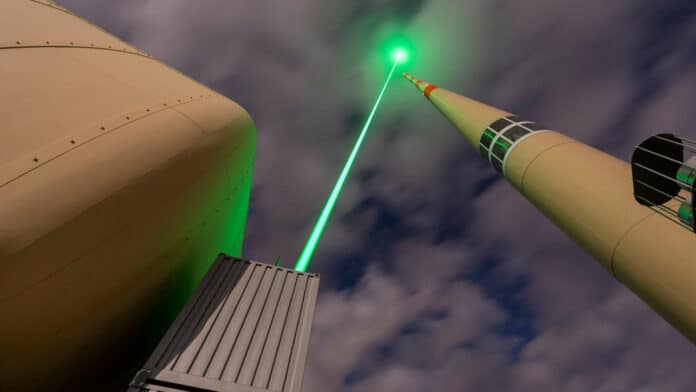Lightning discharges between charged clouds and the Earth’s surface are responsible for considerable damages and casualties. It is, therefore, important to develop better protection methods in addition to the traditional Franklin rod.
A European consortium consisting of the University of Geneva (UNIGE), École Polytechnique (Paris), EPFL, the School of Engineering and Management HEIG-VD, and TRUMPF scientific lasers (Munich) has developed a promising alternative: the Laser Lightning Rod or LLR. This laser lightning rod can deflect lightning over several dozen meters, even in poor weather.
The LLR was used to direct lightning along its beam by producing channels of ionized air, which is electrically conductive, using strong laser pulses. By extending upward from a conventional lightning rod, it might essentially increase both the height and surface of the area it shields.
A new laser with an average power of one kilowatt, a pulse energy of one joule, and a pulse duration of one picosecond was created as part of the LLR project. The rod is 8 meters long, 1.5 meters wide, and more than 3 tonnes in weight. It was created by TRUMPF Scientific Lasers.
The terawatt laser of the LLR was tested on Säntis’ top (2,502 meters above sea level), close to a Swisscom communications tower that is 124 meters tall, and it was outfitted with instruments by EPFL and HEIG-VD / HES-SO to observe lightning. The tower experiences lightning strikes roughly 100 times a year and is one of Europe’s lightning hotspots.
Scientists started by studying the initiation of upward lightning discharges. They then deployed the experimental facilities for lightning observation in cooperation with the HEIG-VD/HES-SO. High-speed video cameras, x-ray sensors, electromagnetic field antennas, lightning current measurements on the tower, and an interferometric system to image the lightning discharge were among the instruments used.
Farhad Rachidi, in the School of Engineering, said, “This was a remarkable experimental achievement because of the multitude of measurement stations located in a mountainous region with harsh weather conditions, which each required time synchronization, monitoring, and control capabilities.”
“These simultaneous observations allowed us to corroborate the guiding of the lightning using the high-power laser.”
Aurélien Houard, a research scientist in the Laboratoire d’Optique Appliquée (LOA) and coordinator of the project, said, “The laser was activated every time storm activity was forecast between June and September 2021. The area had to be closed to air traffic in advance. The aim was to see whether there was a difference with or without the laser.”
“We compared the data collected when the laser filament was produced above the tower and when the tower was struck naturally by lightning.”
Scientists took almost a year to analyze the gathered data. They found that the LLR laser can guide lightning effectively.
Jean-Pierre Wolf, UNIGE professor of physics and the study’s last author, said, “From the first lightning event using the laser, we found that the discharge could follow the beam for nearly 60 meters before reaching the tower, meaning that it increased the radius of the protection surface from 120 m to 180 m.”
Journal Reference:
- Houard, A., Walch, P., Produit, T. et al. Laser-guided lightning. Nat. Photon. (2023). DOI: 10.1038/s41566-022-01139-z
